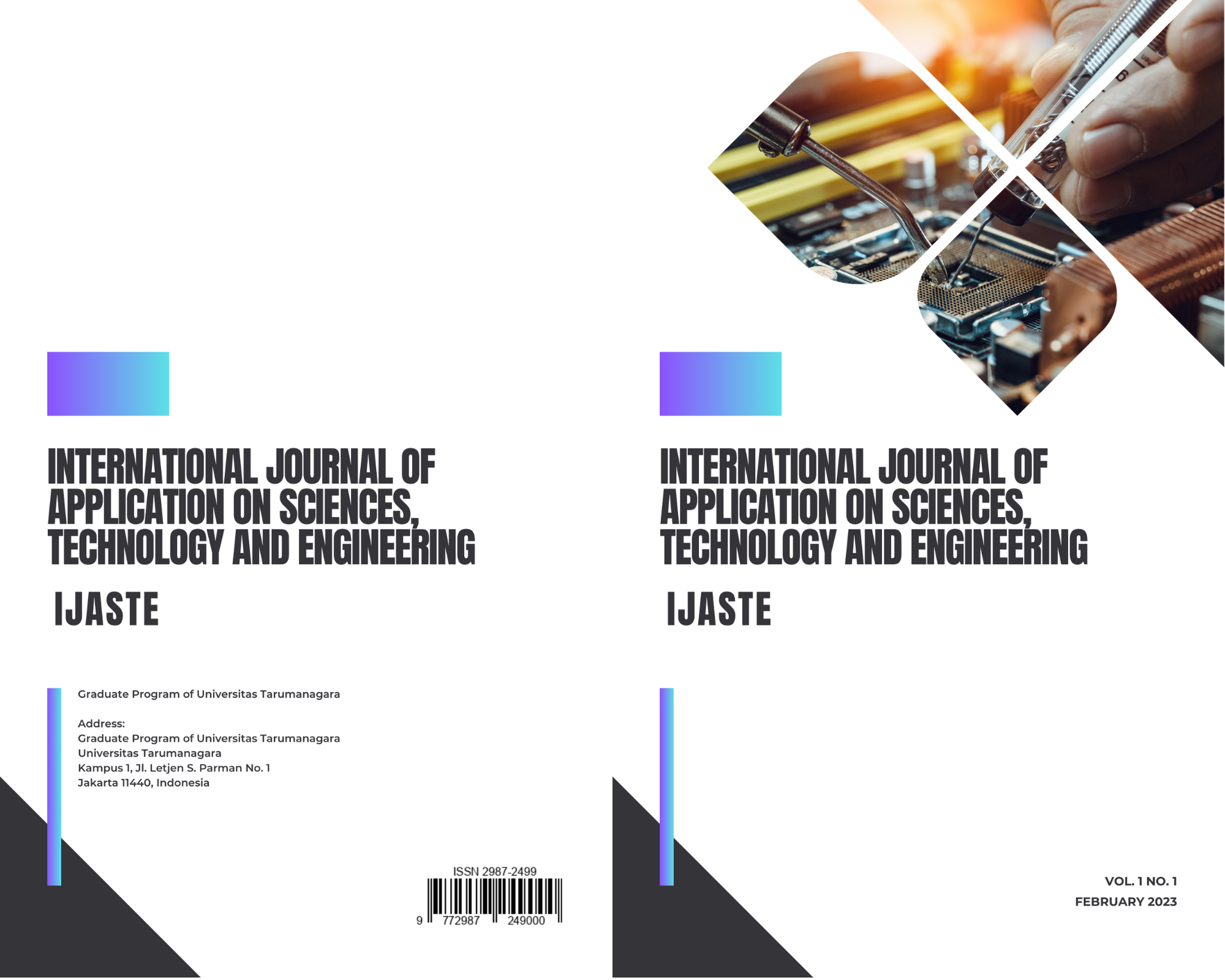Analysis of the Aerodynamic Characteristics of Small-Sized Car Vehicles under the Influence of Steady Crosswind
Main Article Content
Abstract
The crosswind is one of the factors that can lead to a car accident. Crosswind is defined as a side force that causes a vehicle to become unstable and deviate from its desired path. This article focuses on evaluating the flow behaviour and aerodynamic loads that affect vehicle stability when driving in a steady crosswind. In this study, a numerical approach is used with the ANSYS Fluent software as a platform to run the simulation. In this research, the crosswind flow angle (Ψ) is varied from 0° to 90°. The incompressible flow surrounding the vehicle is solved using the Reynolds-Averaged Navier-Stokes (RANS) equations in conjunctions with the k-ε turbulence model. The Reynolds number is utilized depending on the velocity of the vehicle which are 2.8×106 for high Reynolds number and 7.2×105 for low Reynolds number respectively. According to the findings, the crosswind has a significant quantitative and qualitative impact on aerodynamics. In terms of aerodynamic load, the side coefficient (Cs) increases as the crosswind yaw angle increases. When the crosswind yaw angle reaches 60°, there is a significant drop, but it remains almost constant when the crosswind yaw angle reaches 90°. In terms of flow structure, as the crosswind yaw angle increases, the vortex formation on the leeward region expands, increasing the vehicle stability imbalance. Finally, there is no significant difference in the quantitative aerodynamic characteristics of high and low Reynolds numbers.
Article Details

This work is licensed under a Creative Commons Attribution-NonCommercial-ShareAlike 4.0 International License.
References
Z. M. Jawi, R. Sarani, W. S. Voon, A. Farhan, and M. Sadullah, Weather as a Road Safety Hazard in Malaysia - An Overview (Malaysian Institute of Road Safety Research (MIROS), Selangor 2009).
M. Nabil et al., “A Review of Aerodynamics Influence on Various Car Model Geometry through CFD Techniques,” J. Adv. Res. Fluid Mech. Therm. Sci., 88 109–125 (2021).
S. A. Coleman and C. J. Baker, “An experimental study of the aerodynamic behaviour of high sided lorries in cross winds,” J. Wind Eng. Ind. Aerodyn. 53, 401–429 (1994).
Q. Zhang, C. Su, and Y. Wang, “Numerical investigation on aerodynamic performance and stability of a sedan under wind–bridge–tunnel road condition,” Alexandria Eng. J. 59, 3963–3980 (2020).
T. Tunay, E. Firat, and B. Sahin, “Experimental investigation of the flow around a simplified ground vehicle under effects of the steady crosswind,” Int. J. Heat Fluid Flow 71, 137–152 (2018).
L. Carbonne, N. Winkler, and G. Efraimsson, “Use of Full Coupling of Aerodynamics and Vehicle Dynamics for Numerical Simulation of the Crosswind Stability of Ground Vehicles,” SAE Int. J. Commer. Veh. 9, 359–370 (2016).
C. Proppe and C. Wetzel, “A probabilistic approach for assessing the crosswind stability of ground vehicles,” Veh. Syst. Dyn. 48, 411–428 (2010).
M. Arafat and I. A. Ishak, “CFD Analysis of the Flow around Simplified Next-Generation Train Subjected to Crosswinds at Low Yaw Angles,” CFD Lett. 14, 129–139 (2022).
D. McArthur, D. Burton, M. Thompson, and J. Sheridan, “An experimental characterisation of the wake of a detailed heavy vehicle in cross-wind,” J. Wind Eng. Ind. Aerodyn. 175, 364–375 (2018).
I. A. Ishak, M. S. Mat Ali, M. F. Mohd Yakub, and S. A. Z. Shaikh Salim, “Effect of crosswinds on aerodynamic characteristics around a generic train model,” Int. J. Rail Transp. 7, 23–54, (2019).
Izuan Amin Ishak et al., “Numerical Analysis on the Crosswind Influence Around a Generic Train Moving on Different Bridge Configurations,” J. Adv. Res. Fluid Mech. Therm. Sci. 89, 76–98, (2021).
A. Brandt, B. Jacobson, and S. Sebben, “High speed driving stability of road vehicles under crosswinds: an aerodynamic and vehicle dynamic parametric sensitivity analysis,” Veh. Syst. Dyn., 60 (2022).
T. Favre, "Aerodynamics simulations of ground vehicles in unsteady crosswind." PhD diss., KTH Royal Institute of Technology, 2011.
Q.-L. Wang, Z. Wu, X.-L. Zhu, L.-L. Liu, and Y.-C. Zhang, “Analysis of Aerodynamic Performance of Tesla Model S by CFD,” in Proceedings of the 3rd Annual International Conference on Electronics, Electrical Engineering and Information Science, (Atlantis Press, Paris, 2017) pp. 16–21.
Z. M. Saleh and A. H. Ali, “Numerical Investigation of Drag Reduction Techniques in a Car Model,” IOP Conf. Ser. Mater. Sci. Eng. 671, 012160, (2020).
A. Bornioli, I. Bray, P. Pilkington, and J. Parkin, “Effects of city-wide 20 mph (30km/hour) speed limits on road injuries in Bristol, UK,” Inj. Prev. 26, 85–88, (2020).
M. Arafat, I. A. Ishak, and A. F. Mohammad, “Influence of mesh refinement on the accuracy of numerical results for Next-Generation High Speed Train,” Muar, Unpublished, (2022).
M. H. M. William, Youhanna E. and W. A. Oraby., “Investigation of Crosswind Aerodynamics for Road Vehicles Using CFD Technique,” in Eleventh International Conference of Fluid Dynamics, (ICFD, Alexandria, 2013), pp. 1–11.



